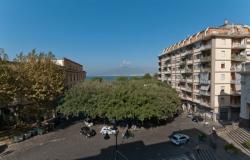Milan – Between Milan and Valtellina there is a gap that goes beyond the hundred kilometers that separate the Lombard capital from Sondrio. In the national ranking relating to daily work productivity the distance is close to 90 euros: a difference of 2,160 euros per month (considering 20 working days), approximately 26 thousand in a year between the Metropolitan City and the mountain area. The ranking drawn up by the research office of the Cgia (Mestre Association of Artisans and Small Businesses) on Prometeia data also shows profound differences in Lombardyfirst region with 435.5 billion euros in added value in 2024 (GDP net of indirect taxes).
Lombardy occupies second place in terms of productivity of goods and services, calculated by comparing the added value to the number of hours corresponding to a full-time employee. At the national level the average figure is 210.6 euros per dayor. Analyzing the territories, however, the Trentino she is the most virtuous with 253 euros a day, ahead of the Lombardy with 251.4 euros. The metropolitan area of Milan has the best performance in Italy: 282.9 euros per day. Lodi is third with 253.3 euros. Cremona (246.1 euros) fifth, Lecco (242.1) sixth and Brescia (238.3) eighth are also among the top ten in the national ranking for daily productivity. Bergamo, twelfth with a value of 236.2 euros, and Monza and Brianza, fourteenth with 233.5 euros, complete the most virtuous territories. Furthest from the other provinces of the region are Varese, twenty-eighth with 217.6 euros, Pavia, thirty-third with 214.5 euros, Como, thirty-fifth with 213.5 euros, and Mantua, thirty-eighth with 208.7 euros. Last is Sondrio, forty-ninth with 199.7 euros.
“This ranking analyzes goods and services produced – he underlines Luca Mocarelli, professor of economic history at the University of Milan Bicocca –. The differences are the effect of Italy’s decades-long slowdown which has accentuated the imbalances. Large companies are no longer there, finance and services matter much more: areas like Milan where they are based benefit from this. The location of Lodi and Cremona he also says that today it is more important to have excellent agriculture, capable of exporting all over the world, rather than a strong manufacturing vocation, which relegates Brescia, for example, behind. Sondrio, compared to a reality like Bolzano, pays beyond not being an autonomous province a different tourism policy, which favored second homes over accommodation facilities. In Bolzano it is exactly the opposite and this affects the GDP.”
Luca Mocarelli, professor of economic history at the University of Milan Bicocca
However, Mocarelli warns against a widespread error: “The GDP (483 billion produced in Lombardy equal to 131.8 euros per day per inhabitant) is not total wealth: Italy has a wealth six times greater than the GDP because it includes example too the real estate assets. The GDP per inhabitant grows for a simple reason: it is a mathematical ratio, by decreasing the inhabitants even if production did not grow the data would be positive”.






